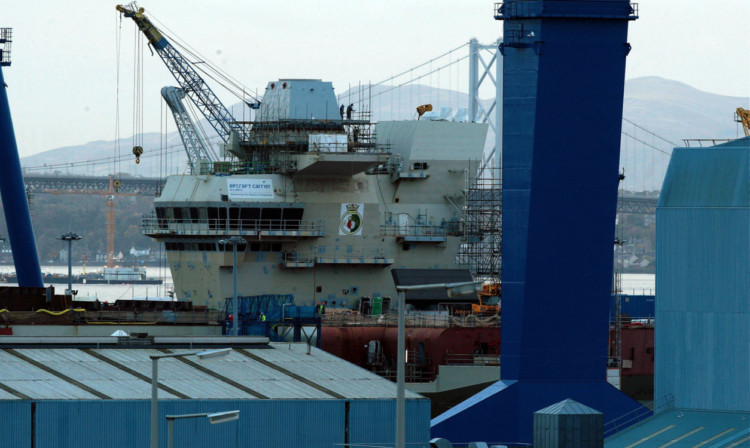A contract to build new Royal Navy ships on the Clyde would be ripped up, with the work given to England, if Scotland votes for independence, the Scottish Secretary has claimed.
Alistair Carmichael heavily hinted plans for BAE’s Scotstoun and Govan yards to build the Type 26 Global Combat ships after next year’s referendum would be sent to Portsmouth in the event of a Yes vote.
It came as BAE systems announced plans to axe 1,775 shipbuilding jobs across the UK and Defence Secretary Philip Hammond said three new ocean-going offshore patrol vessels would be built north of the border, to provide work between the completion of aircraft carriers and the start of the Type 26 combat ships’ construction.
Mr Carmichael, who described Mr Hammond’s announcement on the Clyde shipyards as “the best available news”, said: “This is a matter of law not politics. The UK can let its contracts of naval ship construction within the UK only because of obvious strategic interests.”
Asked whether the type 26 frigates would be built in Glasgow if Scotland votes for independence, he replied: “Of course not, unless, for some reason we have never seen so far, the rest of the UK were to tender outside the UK.
“At that point, Scotland would be in direct competition with Poland, South Korea, Singapore and all the rest.”
He pointed to Royal Navy contracts for non-military vessels, which went to South Korea, as “an example of what is likely to happen then” and said Portsmouth would be “well placed” to take on the order.
BAE announced 940 jobs will be lost in Portsmouth and a further 835 in Glasgow, Rosyth and Filton, near Bristol.
The Courier understands the Fife-based workers are seconded from Glasgow to Babcock to help with the construction of the HMS Queen Elizabeth and her sister ship, Prince of Wales.
One source estimated “a handful of people” living locally would lose their jobs but BAE said they could not provide an accurate breakdown.
In response to a question from Dunfermline and West Fife MP, Thomas Docherty, Mr Hammond said: “A significant number of workers who are nominally based on the Clyde are being bussed on a daily basis to Rosyth to boost the workforce during the carrier assembly phase, so the announcement made by BAE Systems should be read in context.
“My understanding from Babcock is the yard at Rosyth has a bright future with private sector work offshore work as well as with the programme to assemble both the Queen Elizabeth and the Prince of Wales, which itself will keep the yard busy until 2020.”
Scotland’s Deputy First Minister, Nicola Sturgeon, branded Mr Carmichael’s claims “preposterous”.
She added: “I would hope all serious politicians would distance themselves from this kind of suggestion. The Clyde is and will remain the best place to build these Type 26 frigates.”
Ms Sturgeon added: “The loss of 800 jobs across Scottish yards is a significant and devastating blow for the workers involved and for their families, for the industry and the wider Glasgow and Scottish economy.”
Unions called the job losses a “devastating blow” to the industry, while some politicians said Portsmouth was being hit harder than yards in Scotland because of the independence referendum.
